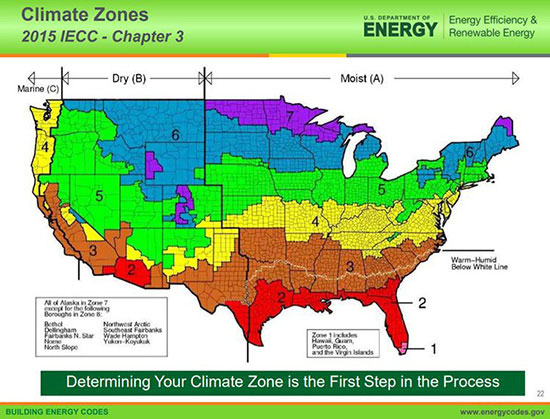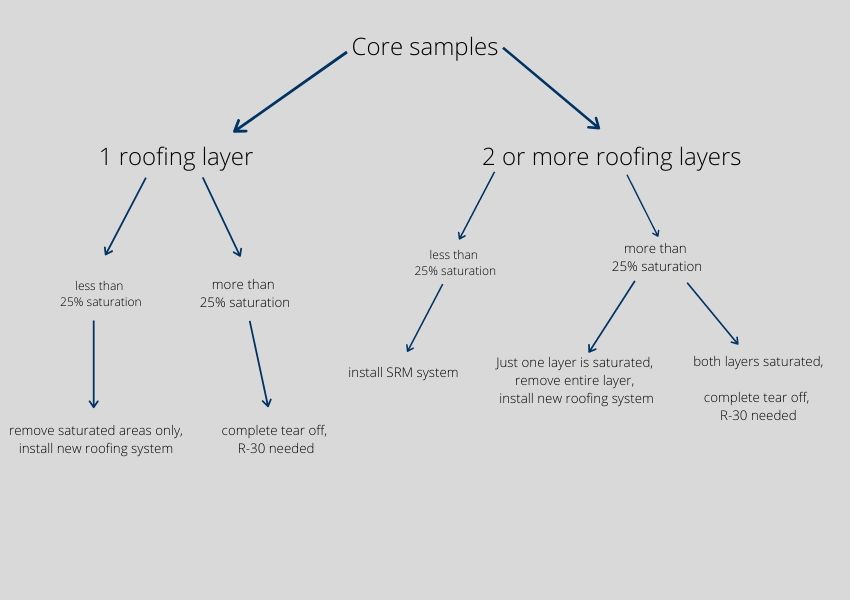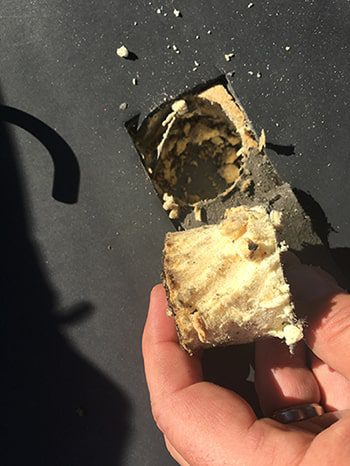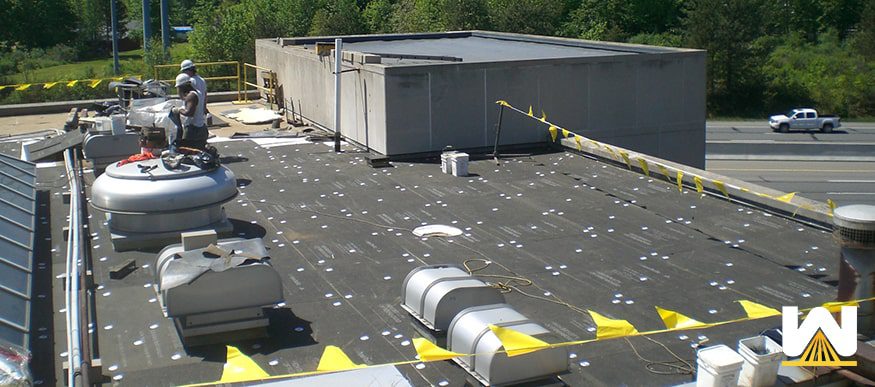You may wonder if there’s a certain R-value you need to hit to comply with building codes.
The short answer is, if you need to remove your roofing system all the way down to the deck, then yes, you need to comply with the latest minimal R-value requirements.
If you can re-roof over your existing roof, then you don’t.
To determine if you need to remove your existing roof all the way to the deck or not, there are a few questions that need to be answered:
- How many roofing systems do you currently have installed?
- Do you have any saturation in your insulation?
- What area of the country is your roof located in?
In this post, we’ll show you how all these questions get answered, and depending on the answers, we’ll show you the possible roofing options you’ll have.
Let’s get into it:
Do I need to remove everything, or can I re-roof?
The first thing you need to know is, am I going to remove everything off my roof and go down to the deck, or can I re-roof over what’s already there?
If you’re going to start fresh and remove everything down to the deck, your new roof will need to hit a minimum R-value.
If you’re in Zone 5, the minimum R-value your new roof must have is an R-30. Here is a map of the US showing all the zones:

And for each zone, here is the required R-values for a new roof:

Now if you’re restoring your roof (as in not tearing down to the deck), say by installing a silicone roof coating system, your existing roof doesn’t have to hit the R-30 mark.
If you’re going to install spray foam over an existing roof, or a single-ply system over an existing roof, your new roof will not need to hit the R-30 requirement. What you need to watch out for is another building code, and that’s the maximum amount of roofing layers you can have on your commercial roof.
According to building code, you can only have two roofing systems on a commercial roof.
If you have two layers and want to install a roofing system over top, that will not comply with building code. You would need to completely remove at least one roofing system before adding a new roof.
Here’s a quick summary of what we’re about to go over:

What should a building owner do first?
The first thing you should do is contact a roofing contractor who can pull a few core samples for analysis.

What the core sample will tell you:
- How many roofing layers there are?
- If there’s saturation in your insulation
- What type of deck is present?
- How old is the roof?
If some (or none) of your core samples show saturation, you can ask the roofing contractor to perform an infrared inspection. An infrared inspection will determine how much of your current insulation is saturated.
Since it’s impossible to see underneath your substrate, the infrared camera is needed.
After the infrared inspection, if you have 25% or less saturation in your insulation, and you only have one roofing layer, you can remove only the saturated insulation, install new insulation, and then add a roofing system over top.
If you already have two roofing layers, and under 25% saturated insulation, what can be performed is a silicone restoration membrane.
The silicone roof coating system is a seamless roofing system that restores your current roof and can bring it back under a 10-20-year warranty.
The best advantage of a roof coating system is that it’s considered maintenance by building codes and is not considered another roofing layer.
What happens if I have more than 25% saturation under my roof?
If your roof is more than 25% saturated, it’s best to remove it and all of the insulation and start over.
In this scenario, you would need to make sure your next roof meets or exceeds the R-values in the earlier sections.
How to get a commercial roof to an R-30?
Here are the R-values of the most popular commercial roofing systems:
- Spray Polyurethane Foam: 6.5 per inch of thickness
- Metal: 0.00 per inch of thickness
- TPO: 0.24 per inch of thickness
- EPDM: 0.33 per inch of thickness
- BUR Gravel: 0.34 per inch of thickness
- BUR Smooth: 0.24 per inch of thickness
- XPS Insulation: 5.0 per inch of thickness
- EPS Insulation: 3.85 per inch of thickness
- Polyiso: 5.5 per inch of thickness
There are many factors you should take into account when choosing a roofing system, such as (R-value, lifetime cost, and renewability) but we wanted to give you a few options you can take to get a roof to an R-30.
1. Install a single-ply roofing system
A single-ply roofing system (TPO or EPDM) has a 0.24-0.33 R-value with a typical installed thickness level; therefore, you’ll need a considerable thickness of insulation to achieve an R-30.
Polyiso is a great choice for insulation due to its price and performance. With an R-value of 5.5, you would need to install almost 6 inches to hit the R-30 mark.
Install your single-ply over the polyiso insulation and you’re compliant.
2. Install a spray foam roofing system
A spray foam roofing system has an R-value of 6.5 per sq. inch of thickness. Spray foam can usually be directly applied to existing roofing systems, but in some cases, a polyiso board is needed.
If you install 2 inches of ISO board (R-11) and 3 inches of spray foam (R-19.8), you’ll be over an R-30.
Do you need to get to an R-30, or can you re-roof?
Hopefully, now you have a clear understanding of what a roofing contractor does to give you the best roofing options for your situation.
What do you think?
Do you think you’ll be eligible for a roof coating system? Are you certain that you’ll need to remove everything down to the deck and hit that new R-value number?
Contacting a roofing contractor so they can pull core samples and do an infrared inspection is a great start.
If you’d like to learn more about the roofing systems we’ve talked about today, please click on the links below:
- How much does a spray foam roof cost per square foot?
- What are the pros and cons of roof coating systems?
If you’d like to see the pros and cons of all commercial roofing systems, please download the eBook below:


